Readers note: This is a continuation of the part 1 series. It is important that you read part 1 before this. Thanks.
Transporting Suckers:
Suckers are very bulky and transporting them over long distances can be a nightmare. You can reduce transportation cost by cutting the pseudostems in half. The larger the corm sizes, the greater the survival rate. Even if the pseudostem eventually dies, new suckers will emerge from the corm if you leave it for some weeks. Suckers with large corms can be cut off a few centimeters above the corm.
Chemical Treatment of Suckers: After peeling the corms, I wash them and using a knapsack sprayer, I spray a mixture of insecticides, fungicides and foliar fertilizer on the corm. But note, peel the corms outside your farm to avoid introducing new pests and diseases to your farm.
I used the following pesticides on the corms:
1. Abamectin: Product name is ‘Punch’. This is an insecticide that will take care of corm weevils and other insects pests. Another good thing about Abamectin is that it kills nematodes too. I’ll soon write about injecting Abamectin into plantain stem to effectively control nematodes. This has been scientifically proven. And in case you don’t know, nematodes are soil pests that can drastically reduce plantain yield.
.
2. Imidacloprid: Product names include ‘Courage’, ‘Imidaview’, ‘Imiforce’ etc. This is also an insecticide. It is systemic, meaning that the corm will absorb it and it will kill corm weevils and other insect pests even if they are in the middle of the corm. Other systemic pesticides that you can use includes Fipronil, Chlorpyrifos etc. Chlorpyrifos also kills nematodes.
3. Fungicides: I used 2 fungicides, namely mancozeb ( product name ‘ZebCare’) and Hexaconazole (product name ‘Control Total’ or ‘Hat Trick’). Mancozeb is a contact fungicide – it can’t be absorbed into the plant system. But fungi cannot easily build resistance against it. Hexaconazole is systemic – it can be absorb into plant tissues but fungi can build resistance against it. Combining the two fungicides ensures that they attack diseases within and outside the plant without risk of resistance developing.
t
Other good fungicide combinations you can use are Saaf (Carbendazim and mancozeb) and Blue Bolt or Red Force (metalaxyl and Copper)
3. Foliar fertilizer: I used Haifa Bonus NPK. This is a very good soluble fertilizer that contains NPK, micro and secondary nutrients like Copper, iron, zinc, manganese, boron and molybdenum. All these are very essential for plant growth. This nutrients will help give the suckers a good start. But they won’t last long. So manure and NPK fertilizer are needed to supply more nutrients.
Rather than just spraying the corms with pesticides mixture, you can add lots of mud or clay soil to the mixture and mix thoroughly. Then dip the corms into this mix. The mud-pesticide mix will adhere to the corms. I think this will be better.
Warning: When handling pesticides, wear protective clothing. Protect your eyes with googles, your hands with gloves and your skin with cloth. Some of these pesticides can cause health problems later in life.
Best Way to Treat Suckers without chemicals:
The boiling water method can be used to effectively kill pests and diseases on the corms and roots without the need for costly chemicals. This has been scientifically proven to work. It involves washing and dipping the corm in boiling water for 30 seconds. Warning: Don’t exceed 30 seconds.
With this method, you don’t need to go through the stress of removing the roots or peeling the corm. If you do, survival and yield will be badly affected. If you like, you can still apply a pesticide mixture to the corms and roots after they cool down.
If you must delay planting, store the suckers in an upright position under shade and plant within 1 week.
Planting the Suckers:
Spacing: I used a spacing of 2m by 3m, (i.e. 2m between plants and 3m between rows). Using closer spacing may be risky because of the high humidity it will promote. And high humidity means more disease headache for you. So dig holes that are 2m x 3m apart and fill them with manure. I used 1 bucket (11 Liters) of manure per hole. Mix the manure with soil and get ready for planting.
To plant, bury the corms in the holes, covering about 2cm of the pseudostem (don’t plant too deeply to prevent pseudostem rot). Note that the cut surface of the corm (the side attached to the mother plant), should be placed against the wall of the holes. Buds or new suckers will appear on the opposite side where the soil is loose.
–
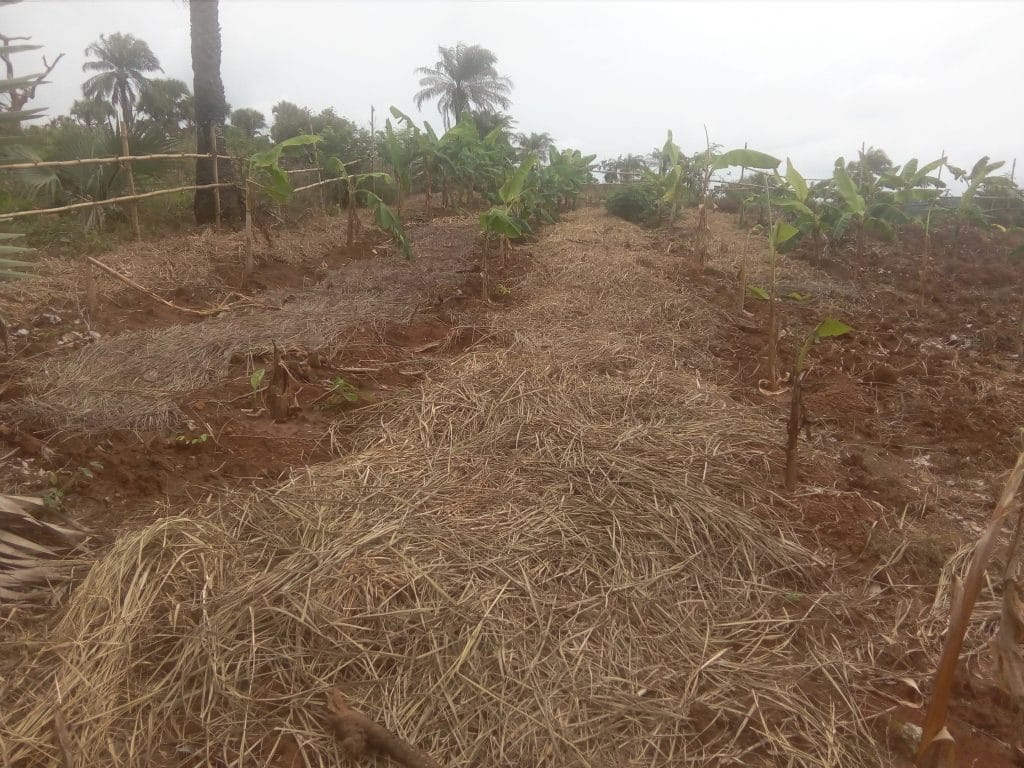
New Plantain Plantation looking miserable initially. Notice the grass mulch between rows. They should be some distance away from the plants to avoid shallow root system that will cause the plants to fall under wind/rain.
–
When planting on a slope, position the corms in such a way that new suckers will appear on the uphill side of the slope. This will delay formation of high mat (more on this later).
During planting, press the soil firmly around the stem. If it is not firm enough, wind will cause the plant to tilt. Make sure you plant them upright. Check them after some days, if any have tilted, position them upright and firm up the soil around them. If you don’t do this as early as possible, the plant will resist your attempt to position it upright and the pseudostem might break if you force it.
You will loose some suckers, so be ready to replace them. When any sucker dies, leave it for some weeks to see if another sucker will sprout from its corm. Many of mine that died grew new suckers after some weeks. But if you have plenty of suckers, simply replant.
After planting the suckers, make sure that they are well watered for the first 3-4 months. So plant at a time when the rain is steady.
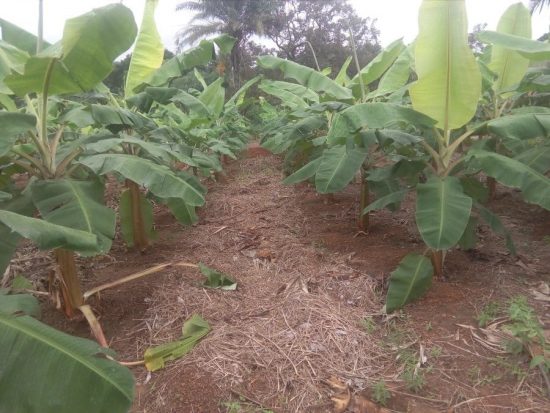
My plantain farm. Notice the dry grass mulch between rows
Now, move over to Part 3.
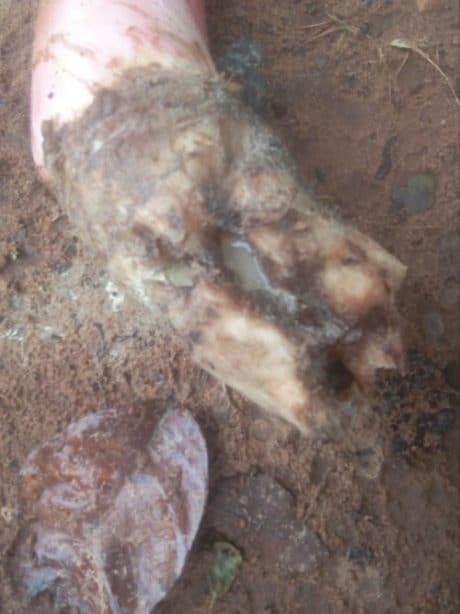
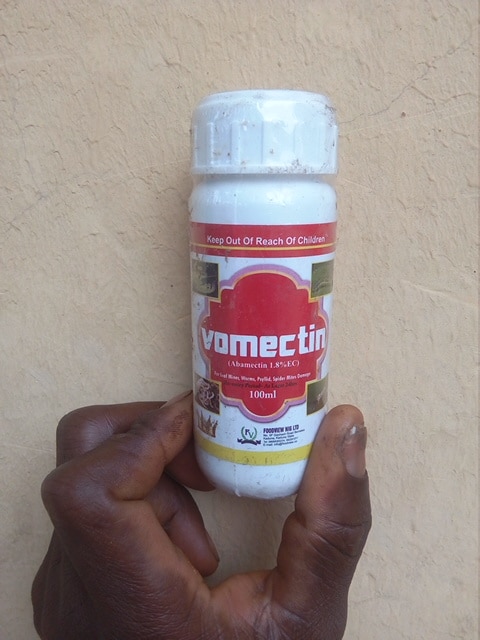
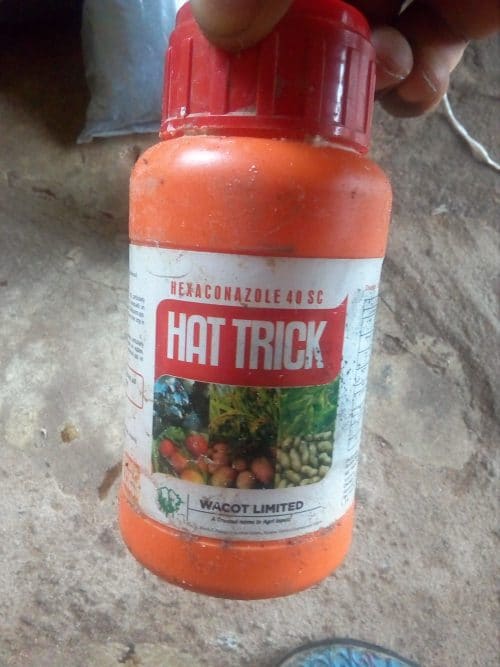
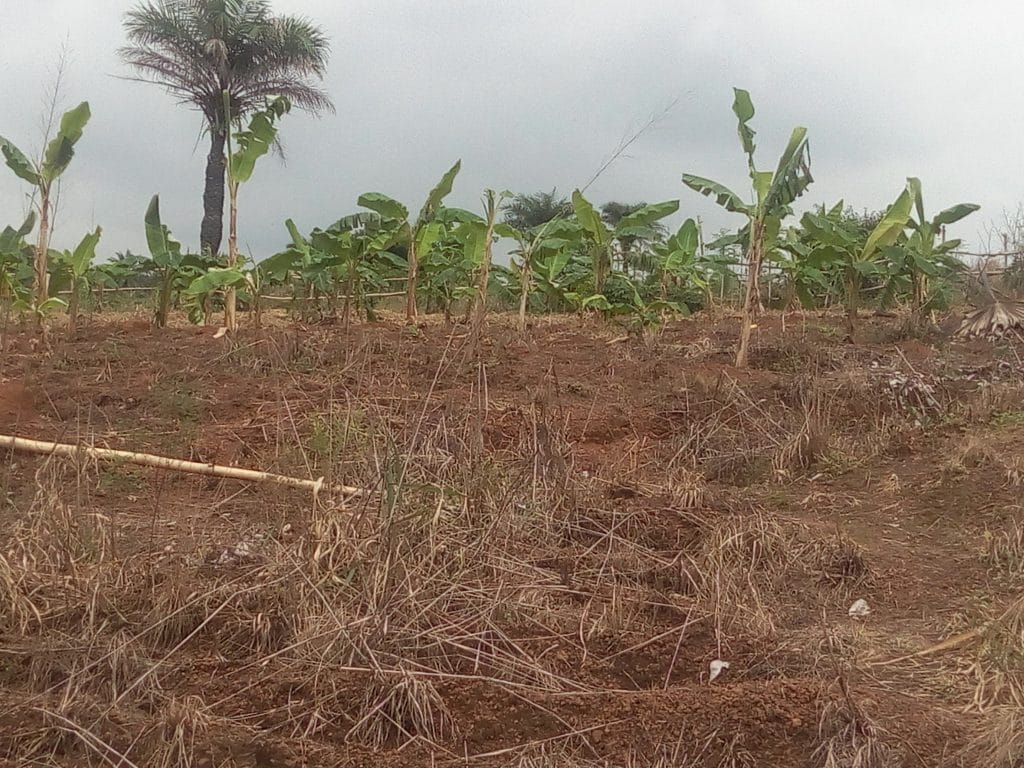
I am learning a lot here